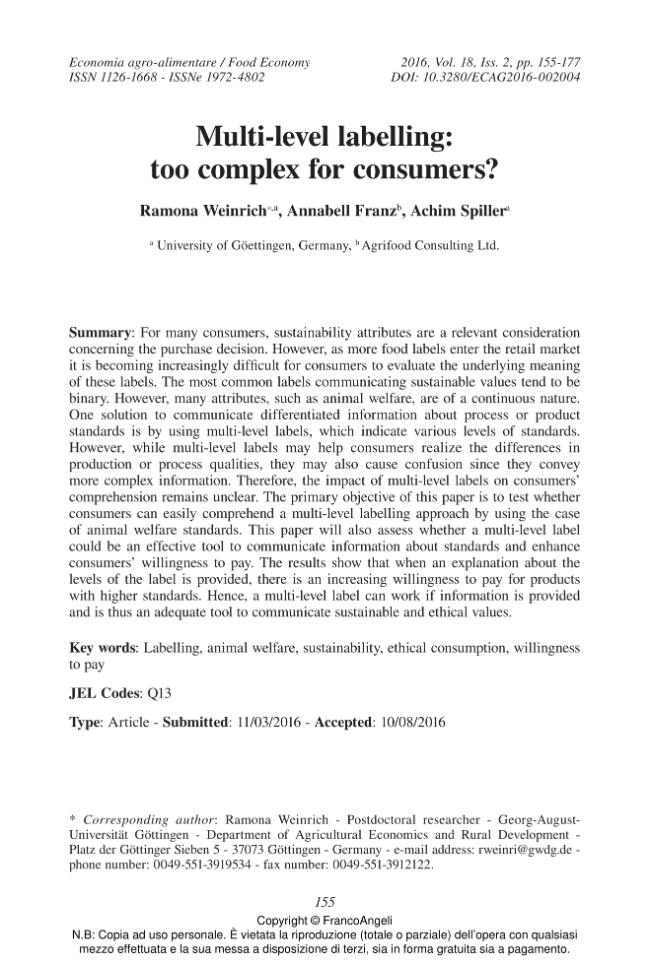Multi-level labelling : too complex for consumers?
155-172 p.
For many consumers, sustainability attributes are a relevant consideration concerning the purchase decision. However, as more food labels enter the retail market it is becoming increasingly difficult for consumers to evaluate the underlying meaning of these labels. The most common labels communicating sustainable values tend to be binary. However, many attributes, such as animal welfare, are of a continuous nature. One solution to communicate differentiated information about process or product standards is by using multi-level labels, which indicate various levels of standards. However, while multi-level labels may help consumers realize the differences in production or process qualities, they may also cause confusion since they convey more complex information. Therefore, the impact of multi-level labels on consumers' comprehension remains unclear. The primary objective of this paper is to test whether consumers can easily comprehend a multi-level labelling approach by using the case of animal welfare standar
ds. This paper will also assess whether a multi-level label could be an effective tool to communicate information about standards and enhance consumers' willingness to pay. The results show that when an explanation about the levels of the label is provided, there is an increasing willingness to pay for products with higher standards. Hence, a multi-level label can work if information is provided and is thus an adequate tool to communicate sustainable and ethical values. [Publisher's Text].
Ist Teil von
Economia agro-alimentare : XVIII, 2, 2016-
Artikel aus derselben Ausgabe (einzeln erhältlich)
-
Informationen
ISSN: 1972-4802
KEYWORDS
- Labelling, animal welfare, sustainability, ethical consumption, willingness to pay.



